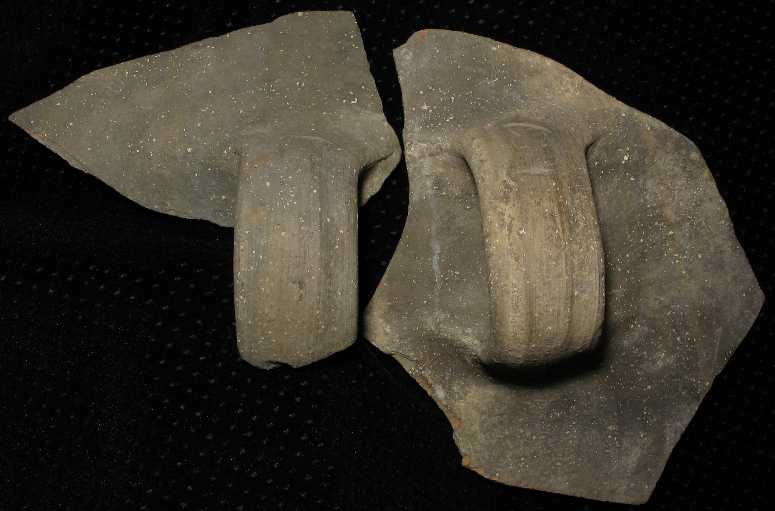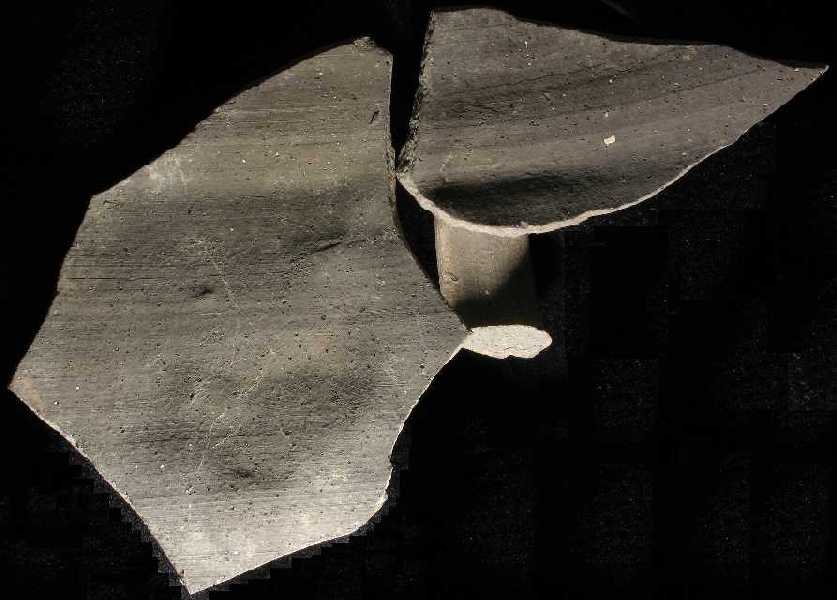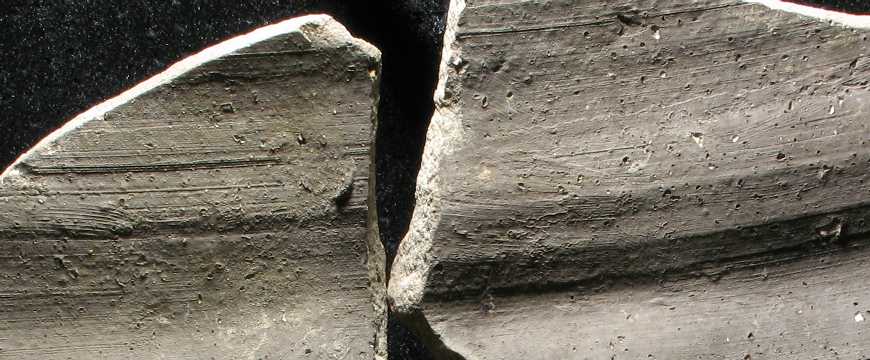
 |
Match-Analysis of Redondo Beach's #63 & #64 LMLK Handles |
|
LMLK Home Biblical Accounts NonBiblical Accounts Theories HBRN MMST SUKE ZYF Generic x (cannot classify) 2-Top 2-Divided 2-Undivided 4-Cursory 4-Lapidarist Jars Personal Seals Incisions Paleography Typologies Corpus Stratigraphy Geography Displays Publications Credits Updates 
|
Using the Handle-Matching page as a guide, two H2U handles (#63 & #64) in the Redondo Beach collection have many similar characteristics suggesting they once belonged to the same jar:
Below are 4 photos with the handles placed side-by-side. Since both stamps have 9:00 orientations, they were most likely adjacent rather than opposite on the jar. The first 2 photos show them situated in 2 alternate positions, with the loops as far apart & as close as possible given their fragmentary condition (their actual distance on the jar would be significantly farther apart in either scenario, but they're positioned as close as possible in these photos for the sake of comparison under the same lighting conditions). The 3rd photo shows their inner/jar side. About a dozen photos were taken using various lighting angles, but this one shows what appears to be 2 parallel indentation lines running above the jar's main curvature. This would seem to be compelling evidence for a match; however, the 4th photo with different lighting shows an even closer view, & reveals such a significant difference, that even if the handles were positioned on opposite sides of the jar, it's highly unlikely they were on the same jar! Therefore, the best explanation for all the other characteristics of similarity, is that these 2 handles belonged to 2 different jars that were made from the same batch of clay, formed by the same potter on the same day, stamped by the exact same seal-officer, fired in the same oven, & traveled together during the course of their usage since they ended up in the same unknown locus in antiquity, where they were found at some point in modern times. |
   
|
|
Number of visits: |
This page was created on December 28, 2007, & last updated on December 28, 2007 |